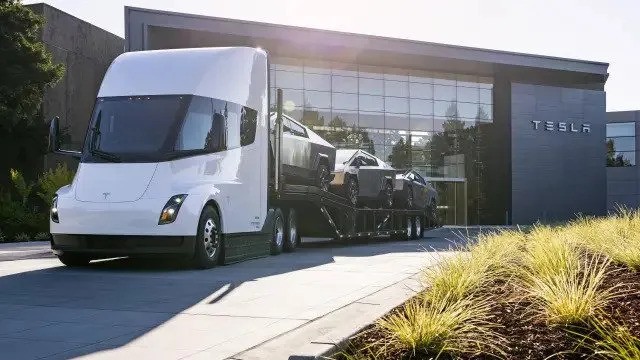Written by Will Kessler,
Converting America’s medium and heavy-duty trucks to battery operation in accordance with goals from the Biden administration would add massive costs to commercial trucking, according to a new analysis released last Wednesday
The cost to switch over to light-duty EVs like a transit van would equate to a five percent increase in costs per year while switching over medium- and heavy-duty trucks would add up to 114 percent in costs per year to already struggling businesses, according to a report from transportation and logistics company Ryder Systems.
The Biden administration, in an effort to facilitate a transition to EVs, finalized new emission standards in March that would require a huge number of heavy-duty vehicles to be electric or zero-emission by 2032 and has created a plan to roll out charging infrastructure across the country.
“There are specific applications where EV adoption makes sense today, but the use cases are still limited,” Karen Jones, executive vice president at Ryder, said in an accompanying press release.
“Yet we’re facing regulations aimed at accelerating broader EV adoption when the technology and infrastructure are still developing. Until the gap in TCT for heavier-duty vehicles is narrowed or closed, we cannot expect many companies to make the transition, and, if required to convert in today’s market, we face more supply chain disruptions, transportation cost increases, and additional inflationary pressure.”
Inflation is already elevated, measuring 3.5 percent year-over-year in March, far from the Federal Reserve’s two percent target.
Increased expense projections differ by state, with class 8 heavy-duty trucks costing 94 percent more per year in California compared to traditional trucks, due largely to a 501 percent increase in equipment costs, while cost savings on fuel only amounted to 52 percent.
In Georgia, costs would be 114 percent higher due to higher equipment costs, labor costs, a smaller payload capacity and more.
The EPA also recently finalized rules mandating that 67 percent of all light-duty vehicles sold after 2032 be electric or hybrid. Around $1 billion from the Inflation Reduction Act has already been designated to be used by subnational governments in the U.S. to replace some heavy-duty vehicles with EVs, like delivery trucks or school buses.
The Biden administration has also had trouble expanding EV charging infrastructure across the country, despite allotting $7.5 billion for chargers in 2021.
Current charging infrastructure frequently has issues operating properly, adding to fears of “range anxiety,” where EV owners worry they will become stranded without a charger.
Source: https://principia-scientific.com
Disclaimer: We at Prepare for Change (PFC) bring you information that is not offered by the mainstream news, and therefore may seem controversial. The opinions, views, statements, and/or information we present are not necessarily promoted, endorsed, espoused, or agreed to by Prepare for Change, its leadership Council, members, those who work with PFC, or those who read its content. However, they are hopefully provocative. Please use discernment! Use logical thinking, your own intuition and your own connection with Source, Spirit and Natural Laws to help you determine what is true and what is not. By sharing information and seeding dialogue, it is our goal to raise consciousness and awareness of higher truths to free us from enslavement of the matrix in this material realm.
 EN
EN FR
FR


























